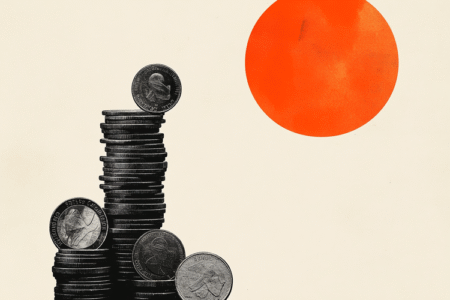- The British Pound weakens as upbeat US data drives broad-based demand for the Greenback.
- US GDP revised sharply higher; Jobless Claims and Durable Goods beat forecasts.
- Attention now shifts to Friday’s Core PCE inflation report, which will provide crucial clues on the Fed’s next move
The British Pound (GBP) loses ground against the US Dollar (USD) on Thursday, with GBP/USD slipping below the 1.3400 psychological mark as a wave of stronger-than-expected US economic data revives demand for the Greenback.
At the time of writing, GBP/USD is trading near 1.3366, falling to levels last seen three weeks ago and down nearly 0.60% on the day. Meanwhile, the US Dollar Index (DXY), which tracks the Greenback’s value against a basket of six major peers, extends its rebound, surging to 98.30, its highest level since September 5.
US data releases reinforced the view that the economy remains on a solid footing. Initial Jobless Claims fell to 218K, beating expectations of 235K and down from 232K the prior week. In parallel, Q2 Gross Domestic Product (GDP) growth was revised higher to 3.8% from 3.3%, comfortably topping forecasts, while Durable Goods Orders jumped 2.9% in August after a sharp drop in July, with ex-defense orders climbing 1.9%.
The inflation component of the GDP report also surprised modestly, as core Personal Consumption Expenditures (PCE) prices rose to 2.6% from 2.5% in Q2. Still, traders are holding back from making bold bets ahead of Friday’s core PCE inflation release for August, which carries a heavier weight for the Federal Reserve’s (Fed) monetary policy outlook.
Kansas City Federal Reserve (Fed) President Jeffrey Schmid said on Thursday that monetary policy remains “slightly restrictive,” which he described as “the right place to be.”
Schmid acknowledged that inflation is “still too high,” though the current job market is “largely in balance.” However, he cautioned that recent data point to “rising risks” to employment, underscoring the Fed’s challenge in navigating its dual mandate.
He added that the latest rate cut was appropriate to offset risks to the labor market, while stressing that the Fed is “close to meeting its mandates” but must remain forward-looking.
US Dollar Price Today
The table below shows the percentage change of US Dollar (USD) against listed major currencies today. US Dollar was the strongest against the British Pound.
| USD | EUR | GBP | JPY | CAD | AUD | NZD | CHF | |
|---|---|---|---|---|---|---|---|---|
| USD | 0.55% | 0.76% | 0.49% | 0.20% | 0.54% | 0.65% | 0.64% | |
| EUR | -0.55% | 0.19% | -0.07% | -0.36% | 0.02% | 0.10% | 0.10% | |
| GBP | -0.76% | -0.19% | -0.22% | -0.55% | -0.20% | -0.07% | -0.07% | |
| JPY | -0.49% | 0.07% | 0.22% | -0.34% | 0.02% | 0.31% | 0.15% | |
| CAD | -0.20% | 0.36% | 0.55% | 0.34% | 0.38% | 0.46% | 0.49% | |
| AUD | -0.54% | -0.02% | 0.20% | -0.02% | -0.38% | 0.39% | 0.09% | |
| NZD | -0.65% | -0.10% | 0.07% | -0.31% | -0.46% | -0.39% | -0.26% | |
| CHF | -0.64% | -0.10% | 0.07% | -0.15% | -0.49% | -0.09% | 0.26% |
The heat map shows percentage changes of major currencies against each other. The base currency is picked from the left column, while the quote currency is picked from the top row. For example, if you pick the US Dollar from the left column and move along the horizontal line to the Japanese Yen, the percentage change displayed in the box will represent USD (base)/JPY (quote).
Read the full article here
















